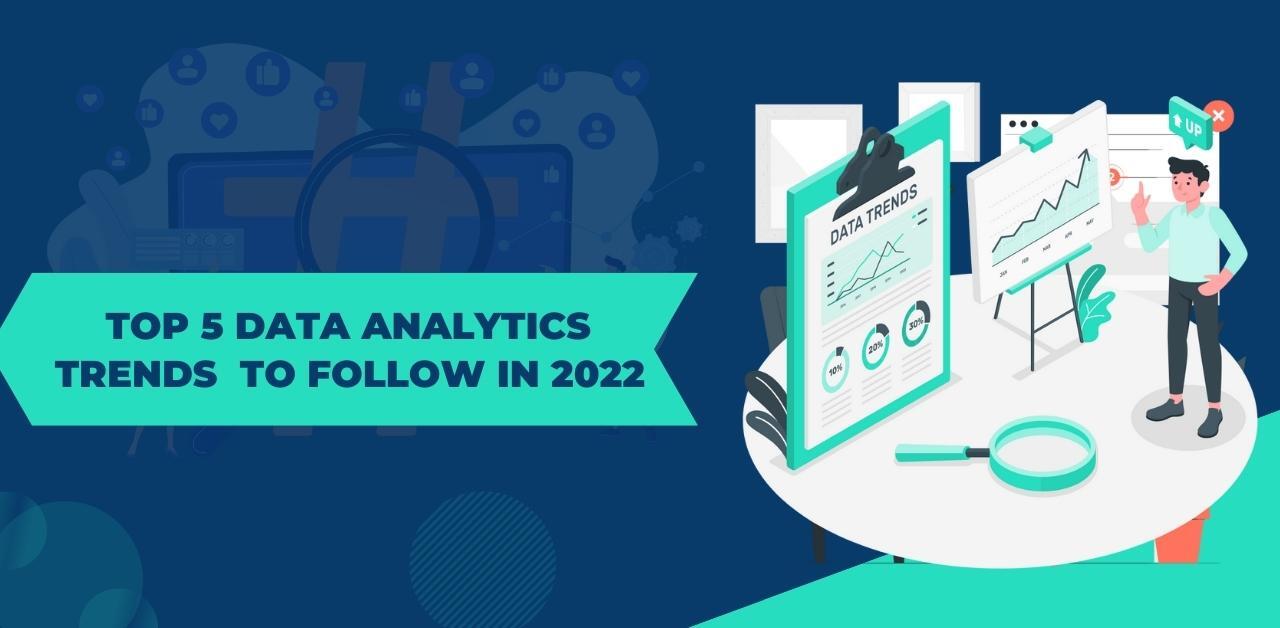There’s no doubt, the data analytics market is booming.
According to the IDC Spending Guide, in 2021 businesses were predicted to spend a whopping $215 billion on Big data and business analytics solutions, which increased by 10% compared to 2020.
This clearly shows that there’s a lot to talk about data analysis trends. Artificial Intelligence, Machine Learning to Cloud Computing are some of the trends defining the data analytics market in 2022 and beyond. But, on the contrary, it’s important to understand a little bit more about the theories, tools, techniques works and how to implement them.
So, let’s delve a little deeper into the background of what to expect from the top data analytics trends of 2022.
Top Trends in data Analytics for 2022 & Beyond
● Artificial Intelligence, NLP and Machine Learning
● Blockchain
● Real Time Analytics
● No-Code Interactive Dashboards for Data Storytelling
● Automation and Augmented Analytics
Artificial Intelligence, NLP and Machine Learning
In a recent symposium by IT research firm, Gartner, by 2024 75% of businesses and organizations will significantly be operating with emerging Artificial Intelligence platforms – with a 500% increase in streaming data and data analysis architectures.
One of the main driving forces behind this surge will be counted as Natural Language Processing- the capability of machines to understand, analyze and communicate in “natural” human understandable language. Precisely, NLP is what powers smart devices, online searches, voice-to-text programs and many more to the list. Furthermore, NLP trends are inching towards how humans interact with technology, to allow a much more unaffected, straight communication.
Advancements in NLP improve data analytics and make it easier to ask a computer for the information you are looking for. So, explore trusted platforms which allow you to perform techniques to automatically organize words and texts by predetermined topics and aspects, or sentiment analysis, to automatically analyze text for “opinion polarity” i.e positive, negative or neutral.
Not to forget, AI is in everyone’s grasp – Machine Learning and Deep Learning algorithms are improving, to an extent that technology can finally have a hold on big data.
Blockchain
Blockchain technology provides data security and transparency and is an open source. So, irrespective of business size, anyone can reap advantages of it. Though it needs a fair amount of infrastructure presently, its implementations are likely to grow manifold, making it a lot easier to reap.
Aside from the security element, the use of smart contracts also allows businesses to streamline by saving time and money, and cutting down on data storage. Peer-to-peer contracts can remove red flags and simultaneously allow businesses, their clients, and contractors to focus on their instant pursuits.
Real Time Analytics
As already known, the future of data is mainly public, constantly streaming, and stored in the cloud.
This clearly means that it can be accessed from anywhere and anytime. In addition, ML and AI platforms are getting smarter, faster at processing, so they can manage data in real time, primarily right as it is actually being created. Even, data storytelling techniques will provide business access to up-to-the-second data to be able to react to changing markets quickly.
No-Code Interactive Dashboards for Data Storytelling
Machine Learning and augmented analytics are assisting analytics and business intelligence apps move away from static dashboard towards data stories that stream constantly, in real time. This eventually do away with the manual work needed to request the data you need, as your data analysis results will be constantly at your fingertips.
And, with new tools making way for rookie or non-coders, they will become even more user-friendly, so that you don’t require a computer science degree to decipher your data.
Automation and Augmented Analytics
Augmented analytics is among the top uses of AI and Machine Learning techniques to automatically prepare data and anticipate a user’s needs by “augmenting” data analytics with decision modeling, data analysis and BI platforms.
Besides, augmented analytics make it easier for humans to interact with data analysis programs and ensure that data is always available, as the data will be automatically and constantly prepared for analysis from all trusted sources:
Presently, with AI and Machine Learning integration, it’s estimated that data scientists spend approximately half of their time cleaning and preparing their data for analysis. And, with an exceptional rise in augmented analytics, there will be less need to manually clean and prep this data.
These tasks will get automatic as new analytics processes and goals are defined. Augmented analytics will streamline and improve data management, paving a constant flow of analyses, working and preparing data 24*7 and in real time also.
Wrapping Up
2022 is all set to witness the revolution in data analytics. The data universe is voluminous and there are untold insights to be collected for any business to harness a competitive advantage. Besides, it’s predicted that organizations that successfully extract actionable insights by reaping data will be a step closer to innovate quicker, strategize better and manage changes more efficiently.



